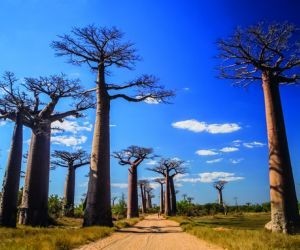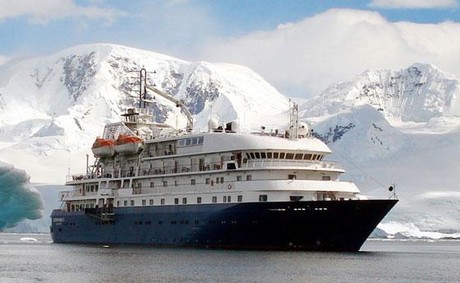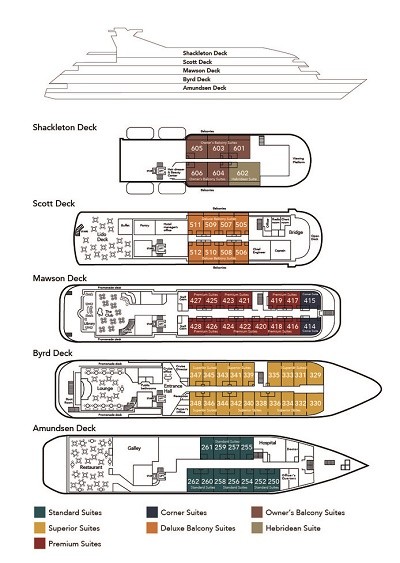
Here is an extraordinary cruise for those who enjoy the natural world and all its wonders. Join us aboard the all-suite MS Hebridean Sky and enjoy the warmth and beauty of the Indian Ocean as she undertakes exactly the type of itinerary that suits her many talents best. Our journey incorporates some fascinating and exotic calls combining the stunning islands of the Seychelles including the magnificent Aldabra Group with the natural wonders of Madagascar before arriving in Southern Africa’s wildlife-rich KwaZulu-Natal.
The first part of our adventure is dedicated to the Seychelles and some of the most idyllic islands in the world. Amongst the highlights of our time in the Seychelles will be the Aldabra Islands, the last breeding ground of the giant tortoise, and in addition to seeing some of these endearing creatures we should also encounter dolphins, turtles and whales as well as countless birds including the flightless rail, the last flightless bird in the Indian Ocean. To explore the abundant crystalclear waters of the vast lagoon and to set foot on atolls which have never been exploited by the hand of man is a rare experience.
This voyage continues to Madagascar, the world’s ‘eighth continent’, where we have five days to explore this extraordinary country that is still relatively unknown amongst even the most serious of travellers. The term ‘unique’ is often an overused description in the travel world but certainly applies to the island of Madagascar where the animals, plants, landscapes and people that make up this thousand-mile-long island are unlike anywhere else in the world. Following a relaxing two days at sea, we arrive in South Africa where our final day will be spent in KwaZulu-Natal where we will learn of the Zulu Kingdom, visit the St Lucia Wetlands with its prolific birdlife and Hluhluwe-Imfolozi, Africa’s oldest game reserve...
Flexibility is the key to an expedition cruise; sometimes the whole day’s schedule will be changed to maximise your experience, something that would not be possible on a large cruise ship. Each day holds something new and below are some extracts from the ship’s log from previous expeditions which will provide you with an idea of what to expect.
Aride: Aride is a nature reserve famed for its birdlife. The keen birders set off at 0630, hoping to get the best of the birdlife and were rewarded with the sight of birds that were totally unafraid of man, many of them at very close range. The birds were certainly friendly as were the two species of skink. White-tailed tropicbirds swooped through the woodland and crash landed in the shrubbery on their way to their nests, their landing technique a stark contrast to their grace in flight. The fairy terns sat on their branches and met us eye to eye. Most people got to see the fluffy little chicks, hatched on a bare branch and now moving around, waiting for their feathers to grow so that they could fly. Seychelles fodies were everywhere while common moorhens ran around in the undergrowth, far away from water.
Nosy Tanihely: Instead of using the Zodiacs this morning, local boats ferried us to the shore of Nosy Tanihely, a small island rising steeply from the beautiful palm fringed beach on which we arrived. One highlight was being able to snorkel among the coral reef that was close to shore. The fish diversity of the relatively small reef was impressive and a friendly Hawksbill turtle swam by. The island was equally impressive. Walking up the concrete summit path was well worth it, and we were treated to an acrobatic display by a group of brown lemurs. The panoramic view from the lighthouse was stunning and only bettered by the white-tailed tropicbirds flying close by. Those that walked around the island were treated to seeing Rufus and Madagascar flying fox flying but also sleeping in the shade.
Availability is always subject to confirmation. Please check with us before booking flights
There are no future departures for this trip at this stage.
Fly by scheduled indirect flight.
Arrive this afternoon and transfer to the MS Hebridean Sky in Port Victoria. Enjoy welcome drinks and dinner as we sail to our overnight anchorage.
We spend the day exploring a couple of the islands of the Inner Seychelles. During our morning on Praslin we explore the ‘Vallee de Mai’, the last remnant of the original high canopied Seychelles palm forest and home to the coco de mer. We will walk its paths looking out for the rare black parrot and enjoying its natural beauty. Later we hope to anchor off Aride, one of the finest and most important seabird islands in the Indian Ocean. Over one million seabirds breed on the island including tropical shearwater, lesser noddy, frigatebirds and roseate tern and five of the species are unique to the Seychelles such as the Seychelles warbler and Seychelles magpie robin. The island is largely covered in native woodland including the endemic Wright’s gardenia, a shrub with beautifully scented flowers found nowhere else in the world.
There are three islands in the Alphonse group and as we approach the islands over lunch you will understand why they are regarded by many to be the most beautiful of the 115 islands in the Seychelles archipelago. Our plan is to land on the tiny and idyllic island of Bijoutier. Rarely visited, it is a safe haven for a variety of seabirds. There will be the opportunity to swim and we hope to offer a snorkel platform in the crystal clear waters. Bijoutier sits between two larger atolls so the ocean current flows passing Bijoutier replenishing the coral reefs and making them especially rich in biodiversity.
Enjoy a relaxing day at sea as we head to the Outer Seychelles islands. Our lecture programme will continue and you can find a spot on deck to watch for wildlife.
We have two and a half days at the Aldabra Group of islands and our itinerary will be in the hands of our Expedition Leader and Captain who will monitor the local conditions to ensure we maximise our time here. Whilst our itinerary is flexible we plan to call at Aldabra, the island referred to by Sir Julian Huxley as “One of nature’s treasures and should belong to the whole world”. Aldabra is unique and every time we call at what is believed to be the world’s largest atoll we find something new of interest. Sightings have been made of the extremely rare white-throated rail and the atoll is also home to the world’s second largest colony of frigate birds and the largest crab, the coconut crab. Whilst exploring by Zodiac it is difficult to know in which direction to look. The clear blue seas abound with colourful life, the skies are alive with varied birdlife and ashore giant land tortoises forage as they have done for millions of years. We will explore Picard Island with a short walk to see some of the thousands of tortoises and numerous robber crabs. We will include as much as possible during our time on Aldabra making landings on South Island and trips into the lagoon, a vast 17 mile stretch of shallow clear water. From our Zodiacs we can watch the everchanging undersea world and snorkel in colourful coral waters teeming with marine life. Also, see the island of Assumption. The island was ruthlessly plundered for its vast deposits of guano in the early 20th century but peace has returned and the wildlife of rare birds and green turtles are once again in abundance. Our time here will be spent beachcombing, on a nature walk or snorkelling. Meanwhile on Cosmoledo, a huge ring of twelve islands circle a lagoon. Many of the atolls are still to be surveyed and we will explore some of them by Zodiac. This is an important bird area with all three species of booby found in the Seychelles including the last breeding site for the brown booby. We also hope to spot sooty terns and great frigate birds.
We arrive in Madagascar this morning at the Nosy Tanihely Island Marine Reserve, an uninhabited island which offers snorkelling opportunities and wonderful beaches. We will take the chance to either swim in the clear waters or snorkel over the corals keeping an eye out for reef fish, turtles and morays. Alternatively, explore the island where we may see the resident lemurs, skinks, fruit bats and hermit crabs and enjoy fantastic views from the 1908 lighthouse on the island’s highest point.
Mahajanga is a major port in northwest Madagascar situated on the Betsiboka River and is our base for a full day tour of the surrounding area. We will commence with a drive to Lake Mangatsa, a sacred site of many legends where we will learn about local traditions as we search for lemurs, chameleons and birds in the trees. Lunch will be served at the Antsanitia Resort, set in 22 hectare of grounds and located on a stunning section of coastline, and there will be an opportunity to swim or enjoy a walk along the beach, see the local fishing boats and visit the village before we return to the MS Hebridean Sky.
Our lecture programme resumes as we continue our journey around the Madagascan coast.
From our anchorage off the town of Morondava, the capital of the Menabe region, we will use the Zodiacs to land on the local beach. From here there will be a choice of excursions to explore the local region. This morning we will explore Zazamalala Forest, a protected area that is home to a number of species of lemurs, birds, reptiles and plants, and also the base for a breeding centre for critically endangered species of turtles and tortoises. It was initially set up in 2000 as a reforestation project and to promote sustainable use of the forest. We will then head to the Avenue des Baobabs. Of the eight baobab species in the world, six are endemic to Madagascar and here we will marvel at the majestic Grandidier’s baobabs, a couple of dozen of which form a natural avenue. We will learn about the trees and their spiritual significance, as well as have the opportunity to contribute to local reforestation efforts by planting a young baobab ourselves. Alternatively, join a full day excursion to Kirindy Forest (subject to road conditions at time of visit). Situated approximately a two hour drive from Morondava, we will pass the Avenue des Baobabs as we travel north. Kirindy is a 10,000 hectare, dry deciduous forest, one of the most endangered in the world where the flora and fauna include many endemic species. Here we find three species of baobab, and many birds and reptiles including snakes, tortoises and lizards. Eight species of lemur reside here including the pale form marked lemur.
We arrive in Tulear at lunchtime. This afternoon choose to visit the Antsokay Arboretum which is entirely devoted to the conservation of the plants from the southwest of Madagascar. After more than 30 years of hard work, it offers a densely kept selection of flora presenting a typical sub-arid thicket with baobab trees towering over the smaller plants. We will see the four hectare botanical garden which comprises over 900 species of plants of which 90% are endemic to the region. Alternatively, visit the Reniala Private Reserve, a small area of just 60 hectares but containing a spiny forest which is unique to southeastern Madagascar. The park is home to 200 plant species including baobabs as well as being a haven for birders with sightings of paradise flycatchers, Madagascar hoopoe and Madagascar crested drongo.
Spend two days at sea as we cross the Mozambique Channel sailing towards South Africa. Spend time listening to the informative lectures and spotting wildlife from the outer decks.
Set up as a makeshift harbour, during the Anglo Zulu War in 1879, Richards Bay has flourished into one of the main ports of South Africa. Leaving the port we drive north to the Narrows of the St Lucia Estuary which forms part of the iSimangaliso Wetland Park World Heritage Site. Upon arrival in St Lucia town we join a boat ride on the lake which is dotted with marshy, sandbank-islands that are home to thousands of birds. Over 526 different bird species can be found in the St Lucia Wetlands Reserve. The echo of the fish eagle’s haunting cry can be heard while you view the basking and nesting sites of the Nile crocodile and the hundreds of hippos that make their homes in the estuary; the greatest occurrence of both crocodile and hippo in Southern Africa. After our visit choose to return to the ship or continue to Hluhluwe-Imfolozi, the oldest game reserve in all of Africa. Set in the heart of KwaZulu-Natal, the park extends itself over 96,000 hectares, has an immense variety of flora and fauna and is hugely popular not only for its “Big Five” but for the vast birdlife with more than 300 species existing within the reserve. As the home of Operation Rhino in the 1950s and 1960s, the Park became world renowned for its white rhino conservation. In addition to rhino, the reserve has a spectacular variety of bird and animal life, including elephant, lion, leopard, buffalo, blue wildebeest, zebra, giraffe, cheetah, mountain reedbuck, kudu and warthog.
Disembark this morning and transfer to Durban airport to join our scheduled indirect flight.
Arrive this morning.
Hebridean Sky

| Length | 90 metres |
|---|---|
| Built/refurbished | 1992/2016 |
Hebridean Sky has always been known for its effortless elegance, impeccable service and atmosphere of charm and camaraderie. Now we add increased adventure options and an on-site Passenger Service Representative. Hebridean Sky is the perfect blend of luxury and adventurous exploration. Is it a luxury ship? An adventure ship? It’s both! The vessel underwent a multi-million pound refurbishment in Sweden in Spring 2016.
ONBOARD DINING
Great expeditions require great food! We are pleased to offer daily changing breakfast, lunch and dinner menus with an emphasis on providing well balanced and nutritional cuisine. Our team of international chefs has boat loads of creativity and you are sure to experience a variety of interesting dishes throughout your voyage. The restaurant is located on Deck 2 and our service team looks forward to providing a memorable dining experience.
IMPECCABLE SMALL-SHIP AMENITIES
Returning from excursions, passengers enjoy complimentary refreshments, afternoon tea and all-day coffee in The Club, a gracious space for relaxation, surrounded by panoramic windows. Other Sea Explorer features include:
- Library with Internet access
- Lounge with audiovisual facilities
- Dining room
- Wraparound sun deck with Jacuzzi
- Exercise room
- Medical facilities with available doctor
- Elevator serving all passenger decks
- Swimming/zodiac platform
Please note deck plan may vary.
Deck plans are for illustrative purposes only – The actual ship and cabin layout may differ.

Includes
Economy class scheduled air travel • 15 nights aboard the MS Hebridean Sky on a full board basis • House wine, beer and soft drinks with lunch & dinner • Expedition team • Gratuities • Shore excursions • Transfers • Airport taxes • Port taxes.
Excludes
- Travel insurance
- Madagascar visa.

